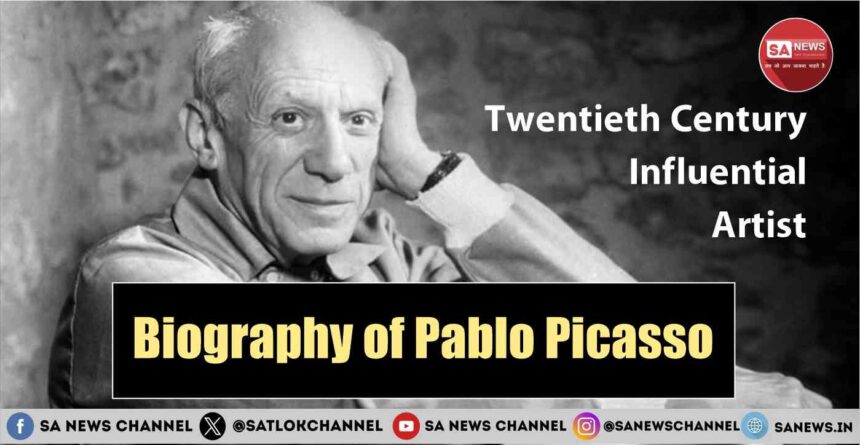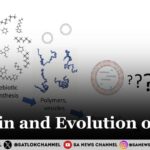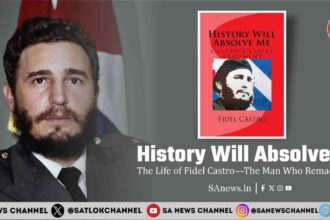Pablo Picasso, full name Pablo Diego José Francisco de Paula Juan Nepomuceno Crispín Crispiniano María de los Remedios Cipriano de la Santísima Trinidad Ruiz y Picasso, is regarded as one of the most dominant and influential artists of the 20th century.
- Early Life and Background of Picasso
- Artistic Education and Influences of Picasso
- Picasso’s Early Career and the Blue Period
- Rose Period and the Transition
- Cubism and Impact on Modern Art
- Picasso’s Major Artistic Phases
- Personal Life and Influence on Art
- Legacy of Pablo Picasso
- Saint Rampal Ji Maharaj influencing the World
Pablo Picasso was a Spanish painter, sculptor, printmaker, ceramicist, and theatre designer who is widely recognized for revolutionizing modern art. He is well known for co-founding Cubism alongside Georges Braque.
Breaking with traditional perspectives, Picasso adopted a groundbreaking approach and introduced new ways to represent form and space. As a contribution to Symbolism and Surrealism, Pablo created collage. Picasso’s work not only transformed artistic expression but also reflected the cultural and political upheavals of his time, securing his legacy as a pioneering visionary whose influence endures globally.
Early Life and Background of Picasso
Born on October 25, 1881, in Málaga, Pablo Picasso was the first child of José Ruiz Blasco and María Picasso y López. José, Picasso’s father, was an art professor and a painter. His work mainly focused on natural depictions of birds. María, Picasso’s mother, was a homemaker. Picasso was raised in a middle-class family. He had been inclined towards drawing since childhood. His mother reported that Picasso’s first words were “piz, piz,” a child’s version of the Spanish word for pencil.

Knowing about his son’s interest in drawing, Picasso’s father began his formal training at the age of seven. Picasso completed his first oil painting, The Little Yellow Picador, by the age of eight. This painting was inspired by a bullfight Picasso once saw with his father. In his early days, Picasso used to spend time sketching, painting, and learning in the artistic environment fostered by his family.
Artistic Education and Influences of Picasso
Pablo Picasso surpassed his father’s abilities and demonstrated prodigious talent. When Picasso was just 14, he was admitted to the School of Fine Arts in Barcelona, La Lonja, after impressing the faculty there with his performance in the entrance exam. At the School of Fine Arts in Barcelona, Picasso gained an academic foundation, learning classical techniques and discovering traditional subjects. At the age of 16, Picasso attended the Royal Academy of San Fernando in Madrid, where he honed his craft.
As a young artist, Picasso was motivated by his father, who taught him technical skills as well as a great respect for art. During his time in Barcelona, Picasso formed a close friendship Manuel Pallarès, who fostered Picasso’s creative freedom. Pallarès took Picasso to formative trips to the Catalan countryside, which inspired him to break free from academic conventions.
Also Read: From Selling Newspaper to Disneyland Empire: Biography of Walt Disney
Picasso’s earliest encounter with the works of Spanish masters such as El Greco and Diego Velázquez, and his later encounters with Impressionists, Post-Impressionists, and African art, deeply modified his evolving style. These experiences inspired Picasso to discover and innovate, laying the groundwork for his revolutionary contributions to modern art.
Picasso’s Early Career and the Blue Period
During his initial years as an artist, Picasso’s work transformed rapidly as he moved from academic realism to a more expressive and modern style. By the end of the 20th century, Picasso began experimenting with color, form, and subject matter.
Picasso’s works during this time were deeply impacted by the loss of his close friend Carlos Casagemas. This event marked the beginning of Picasso’s Blue Period (1901–1904). During the Blue Period, Picasso used only shades of blue and blue-green in his works.
The themes of Picasso’s Blue Period were mournful, introspective, and represented the marginalized sections of society such as beggars, the blind, the poor, and the old. The themes reflected both Picasso’s personal loss and broader social concerns. Picasso’s best works from this period include The Old Guitarist, La Vie, and The Blindman’s Meal.
The Blue Period marked Picasso’s ability to depict personal sorrow in powerful, innovative art that would shape the future of modern painting.
Rose Period and the Transition
Picasso’s Rose Period (1904–1906) denoted a major shift in his artistic style from somber tones and melancholic subjects to a more vibrant palette. During this time, his paintings were dominated by pink, orange, and red colors. This change coincided with Picasso’s personal happiness, influenced in part by his relationship with Fernande Olivier.
During the Rose Period, Picasso’s subjects transformed from marginalized sections to figures depicting tenderness and subtle melancholy, yet were more lively and intimate. These included circus performers, harlequins, acrobats, and clowns. Picasso’s best works during this time were Boy with a Pipe, Family of Saltimbanques, and Girl in a Chemise.
This period saw Picasso’s transition from emotionally introspective ideas to a wider exploration of human experience and artistic innovation.
Cubism and Impact on Modern Art
Developed in the early 20th century by Georges Braque alongside Pablo Picasso, Cubism was a revolution in art. Braque first began with the fragmentation of objects into geometric shapes and demonstrated multiple viewpoints within a single composition.
With works like “Violin and Palette,” this stage of Cubism signaled a departure from conventional methods and a focus on the artificiality of pictures. Both Braque and Picasso also introduced collage and papier collé.
The impact of Cubism on modern art is immense. It not only helped artistic approaches break away from traditional techniques but also laid the foundation for abstraction and inspired movements such as Futurism and Abstract Expressionism.
Picasso’s Major Artistic Phases
Pablo Picasso’s artistic legacy is defined by key masterpieces and diverse phases that revolutionized modern art. His 1907 work Les Demoiselles d’Avignon broke traditional perspectives with fragmented forms and African art influences, pioneering Cubism.
Another masterpiece, Guernica (1937), is an anti-war painting that depicts the events of the Spanish Civil War. Between the 1910s and early 1920s was the Neoclassical phase of Picasso’s career.
During this time, Picasso mainly worked on classical themes and balanced compositions inspired by Renaissance art. By the mid-1920s, Picasso experimented with Surrealism, in which he incorporated dreamlike and psychological elements in his works. The evidence for this is his work Le Rêve. Throughout his life, Picasso constantly experimented with new styles, transitioning from realism to Cubism, to Neoclassicism, and Surrealism. This denoted his creativity and his profound impact on the art of the 20th century.
Personal Life and Influence on Art
Pablo Picasso had multiple relationships that influenced his artistic approach. In 1918, Picasso married Olga Khokhlova which inspired Picasso to a period of classical portraits. Due to Picasso’s infidelities, this marriage with Olga Khokhlova did not last long. In 1927, Picasso had relationship with some of Picasso’s most iconic Surrealist works, including Le Rêve and the Vollard Suite etchings. Marie-Thérèse Walter, a young muse. Walter’s youth and sensuality inspired.
Picasso later became involved with photographer Dora Maar. Dora also documented the creation of his major work, Guernica, and influenced some of his darker works of the late 1930s. Later, Picasso became involved with Françoise Gilot, but this relationship ended very soon due to Picasso’s volatile nature. Picasso finally married Jacqueline Roque, whose presence influenced hundreds of his portraits and his later works.
Each relationship of Picasso not only influenced him but also marked a shift in his artistic style, reflecting both the emotional and psychological impact of his personal life on his creative output.
Legacy of Pablo Picasso
Picasso produced innumerable paintings, sculptures, ceramics, and prints throughout his life. He made an immense contribution to the field of art. Picasso transformed the perception of form and space, developed collage, and continued to influence artists with his expressive creativity and innovation. His works reflect social and political events, as evident in pieces such as Guernica and La Vie. Picasso died on April 8, 1973, at the age of 91, due to a heart attack.
Saint Rampal Ji Maharaj influencing the World
With his benevolence towards humanity through the Annapurna Muhim, Sant Rampal Ji Maharaj is influencing the world. He is helping the poor and the weaker sections of society by providing them with basic needs such as food, clothing, shelter, and education. Sant Rampal Ji Maharaj is not only providing people with worldly benefits but also imparting knowledge that leads to the path of complete salvation.
He grants knowledge according to all the holy scriptures of every sacred religion. Readers are requested to read the sacred book Gyan Ganga or visit Sant Rampal Ji Maharaj Youtube Channel.








